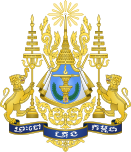Boulder Bridge
Arch bridges in the United StatesBridges completed in 1902Bridges over Rock Creek (Potomac River tributary)Concrete bridges in the United StatesIndividually listed contributing properties to historic districts on the National Register in Washington, D.C. ... and 5 more
NRHP infobox with nocatRoad bridges on the National Register of Historic Places in Washington, D.C.Southern United States bridge (structure) stubsWashington, D.C., Registered Historic Place stubsWashington, D.C., building and structure stubs

The Boulder Bridge is a historic bridge located in the Washington, D.C. portion of Rock Creek Park, an urban national park listed on the National Register of Historic Places. Boulder Bridge was constructed in 1902 and carries Beach Drive across Rock Creek, a tributary of the Potomac River. The reinforced concrete arch bridge was designed by architect W. J. Douglas and was built at a cost of $17,636.Boulder Bridge and Ross Drive Bridge were added to the National Register of Historic Places on March 20, 1980. In addition, the bridges are contributing properties to the Rock Creek Park Historic District.
Excerpt from the Wikipedia article Boulder Bridge (License: CC BY-SA 3.0, Authors, Images).Boulder Bridge
Beach Drive Northwest, Washington
Geographical coordinates (GPS) Address Nearby Places Show on map
Geographical coordinates (GPS)
| Latitude | Longitude |
|---|---|
| N 38.948333333333 ° | E -77.044444444444 ° |
Address
Beach Drive Northwest
Beach Drive Northwest
20008 Washington
District of Columbia, United States
Open on Google Maps








